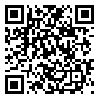BibTeX | RIS | EndNote | Medlars | ProCite | Reference Manager | RefWorks
Send citation to:
URL: http://ijeee.iust.ac.ir/article-1-920-en.html
The doubly fed induction generator (DFIG) is one of the most popular technologies used in wind power systems. With the growing use of DFIGs and increasing power system dependence on them in recent years, protecting of these generators against internal faults is more considered. Loss of excitation (LOE) event is among the most frequent failures in electric generators. However, LOE detection studies heretofore were usually confined to synchronous generators. Common LOE detection methods are based on impedance trajectory which makes the system slow and also prone to interpret a stable power swing (SPS) as a LOE fault. This paper suggests a new method to detect the LOE based on the measured variables from the DFIG terminal. In this combined method for LOE detection, the rate of change of both the terminal voltage and the output reactive power are utilized and for SPS detection, the fast Fourier transform (FFT) analysis of the output instantaneous active power has been used. The performance of the proposed method was evaluated using Matlab/Simulink interface for various power capacities and operating conditions. The results proved the method's quickness, simplicity and security.
Received: 2016/03/26 | Revised: 2017/08/23 | Accepted: 2016/12/26
| Rights and permissions | |
 |
This work is licensed under a Creative Commons Attribution-NonCommercial 4.0 International License. |








